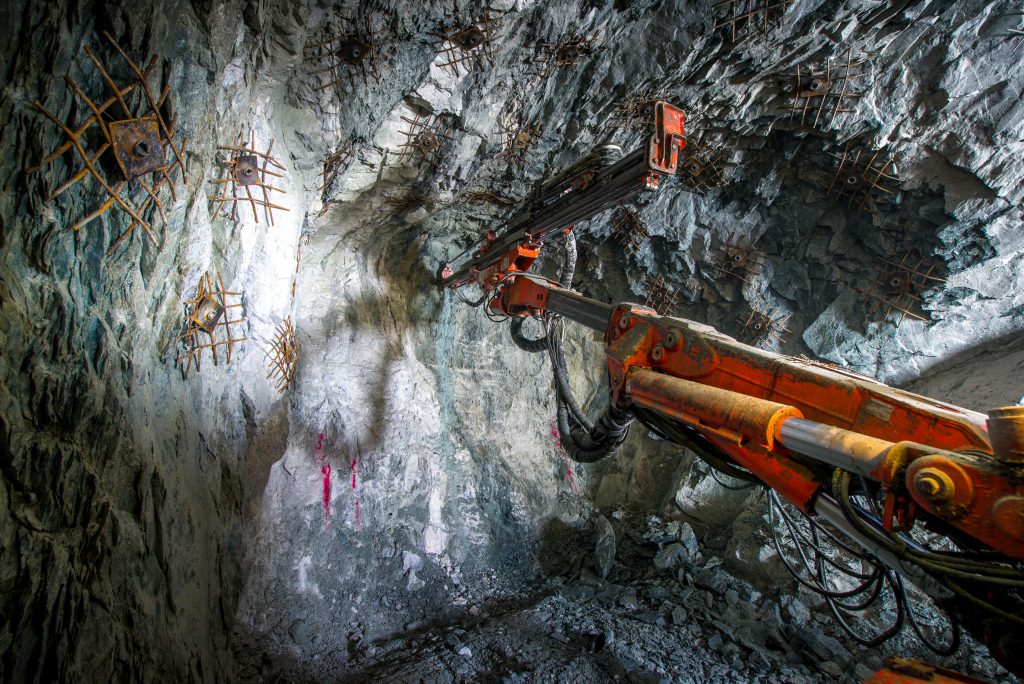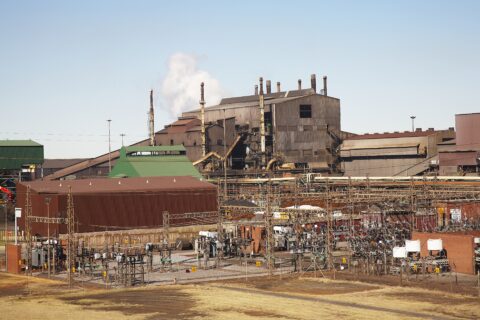SA Mining
Game Changer
Can the open-innovation concept work for the mining industry?
The Mandela Mining Precinct (MMP) recently launched the Isidingo Drill Design Challenge, an open-innovation concept that aims to attract innovative thinkers to design and develop a new-age lighter drill to meet the underground mining sector’s drill needs.
MMP, in collaboration with the Research Institute for Innovation and Sustainability (RIIS), hopes that the challenge will result in the development of an innovative rock drill prototype that will change the entire underground mining landscape.
RIIS is a boutique innovation consulting firm focused on solving intractable business and social problems.
The Isidingo Drill Design Challenge calls on the entire spectrum of industries – architecture, industrial, engineering (mechanical, electrical and civil), arts and design – to produce a cutting-edge drill that is faster, lighter and more powerful than its existing counterpart. The future is now – “It starts with an idea,” Clen Cook, executive of RIIS, said at the launch.
This is the third open-innovation concept being rolled out in the mining sector – the first two projects, the Advanced Orebody Knowledge Challenge and the Spent Foundry sand Challenge, were also run by RIIS.
The Advanced Orebody Knowledge Challenge, run in partnership with the Minerals Council South Africa, hoped to gather novel technologies to detect where orebodies were situated, thus alleviating the need for costly exploration.
The Spent Foundry sand (SFS) Challenge, on the other hand, sought innovative approaches to the analysis of the chemical composition of the SFS. The objective was to reduce the time, damage and cost of analysis arising from the current processes that made use of leaching technologies.
Does industry really need a new rock drill?
Is an innovative new drill the answer to South Africa’s underground mining woes and will this proposed drilling machine be a game changer for the gold and platinum industries?
According to Alastair McFarlane, co-director of the MMP, these sectors of mining are in desperate need of such a product, thus the Isidingo (meaning “the need”) Challenge.
An important objective for the mining industry is safety, and having a safe drilling and blasting environment remains a target. Presently, mining blast cycles are anywhere up to one blast in five or six days. As such, “accelerating the mining cycle will have significant positive impacts across the industry, notably increases in production, mining output and efficiency”, explains Cook.
South Africa, which was the world’s leading gold producer for many decades, continues to have abundant gold reserves albeit located at depths beyond 4km. The need for an innovative drill design is of particular importance to the sector.
Added to this, SA has roughly 70% of the world’s platinum group metals on hand, most of which are located on the platinum belt in the Bushveld Ingenious Complex.
“The mining industry is at a crossroads, in particular the local gold mining industry, which mines to depths of below 4km and has more recently tracked increasing levels of fatalities. Although industry had, between 2012 and 2016, significantly improved health and safety levels, in 2017 the safety records deteriorated dramatically,” explained MacFarlane.
Following a recent mining accident that led to the death of four mine workers at Sibanye-Stillwater’s Kloof mine, Minerals Resources Minister, Gwede Mantashe said it was “the primary responsibility of every employer to provide a safe working space for its workers”.
In addition, the design of the existing rock drill, which has been around since before the 1900s, was only developed as a pneumatically powered machine in 1930 and has remained relatively the same ever since.
“Eighty percent of the conventional industry is still reliant on pneumatic drills and only 20% has upgraded to the recent hydro (hydraulic) power machines, which is the more expensive option,” said MacFarlane.
The conventional drill configuration means that operators are exposed to the most dangerous area of the mine (the stope), in terms of falls of ground, seismicity and gas blows.
The proposed new drill is expected to be a game changer as it is anticipated to dramatically reduce noise levels to well below the South African Mine Health and Safety Council milestone targets of less than 95 decibels (dBa) as well as prevent “white knuckle” syndrome and fatigue caused by vibrations. Expectations are that the new machine would be easily operable by inexperienced or experienced rock drill operators, both male and female.
The criteria for the proposed new drill include: being light-weight, faster, accurate, quieter, have an alternative power/energy source, assemble and dismantle in less than 30 minutes, and incorporate parallelism.
According to Cook, existing drills are cumbersome and rigs to stabilise them can take over an hour and a half to assemble and dismantle. Ideally, “we are looking for a new drill that will take 10 to 15 minutes to set up and another 10 to 15 to take down as opposed to the usual ineffective 30 to 40 minutes of just setting up”.
In essence, the drill needs to preferably be less than 16kg – less than half the current conventional rock drill weight of 28 to 32kg.
Moreover, given that compressed air power is notoriously ineffective (with less than 30% of energy usefully employed during the drilling process), the new unit calls for an alternative energy source that is consistent, efficient and affordable.
Additionally, the new rock drill should be equal to or exceed current penetration rates of traditional compressed air-driven rock drills.
MMP’s co-director Navin Singh noted: “This is a South African challenge for a South African solution to a South African problem. Currently, equipment manufacturers are not localised and one of MMP’s aims is to drive local product supply, thus the Isidingo Challenge encourages developments of products locally. It is high time local suppliers start dominating the supply-chain development within the mining sector.”







 Sign-up and receive the Business Media MAGS newsletter OR SA Mining newsletter straight to your inbox.
Sign-up and receive the Business Media MAGS newsletter OR SA Mining newsletter straight to your inbox.